Major Mitchell’s CockatooPink Cockatoo – water Pink Cockatoo – crest
One of Australia’s iconic bird species, the Major Mitchell’s Cockatoo (Lophochroa leadbeateri) and more commonly known as the Pink Cockatoo, are identified by its delicate shades of soft pink (sometimes described as salmon-pink) and white plumage, and it’s colourful red, yellow and white crest. The crest appears white when it is flattened, once raised, you will see the bands of red and yellow, with the white tips. Sometimes the yellow in the crest may not be so obvious in some birds. The underwings are orange-pink in colour, with white flight feathers.

There are two races (subspecies) of Major Mitchells’s Cockatoo, Lophochroa leadbeateri and Lophochroa mollis. The race Lophochroa mollis have very little to no yellow in the crest compared to Lophochroa leadbeateri who have distinct yellow band through the crest.
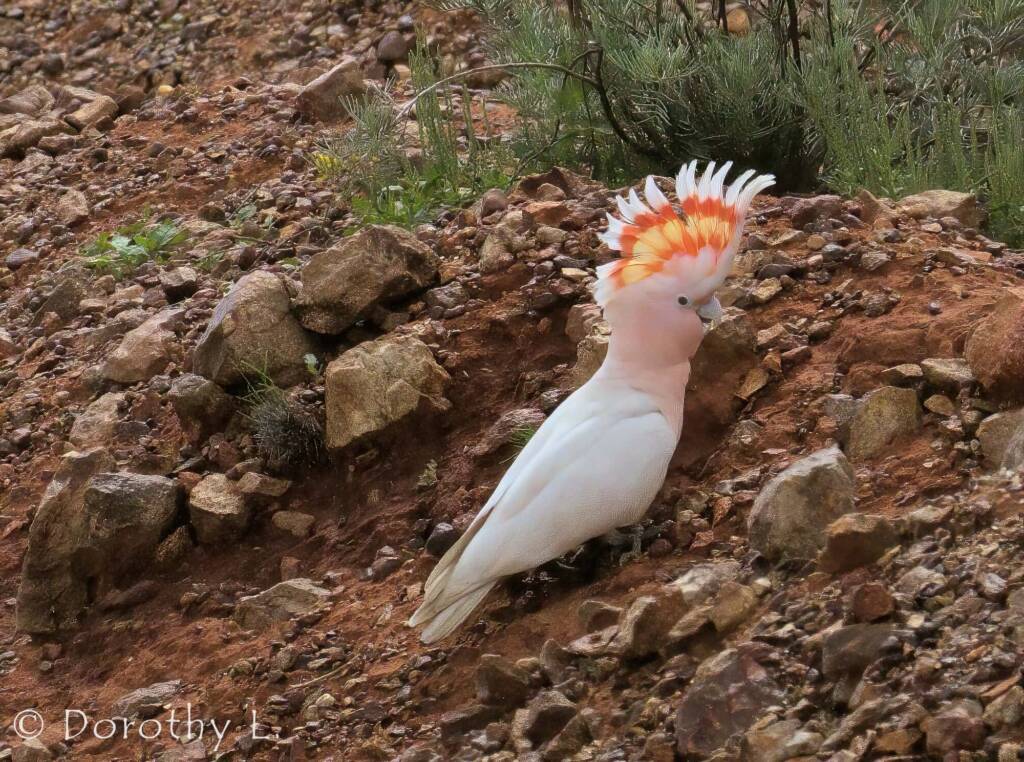

Found in the arid and semi-arid regions of Australia, it is named after one of Australia’s first explorers of the inland region, Major Sir Thomas Mitchell (1792-1855), who referring to this bird wrote
Few birds more enliven the monotonous hues of the Australian forest than this beautiful species whose pink-coloured wings and flowing crest might have embellished the air of a more voluptuous region.
Major Sir Thomas Mitchell


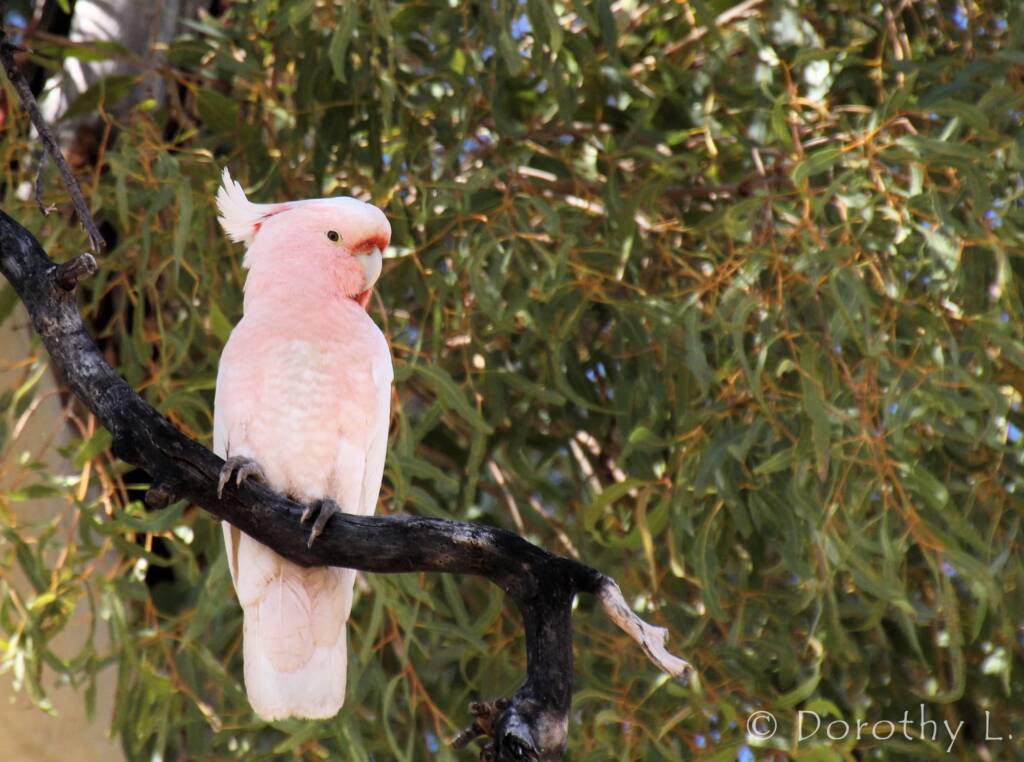
An attractive cockatoo, it is quieter and slightly smaller then it’s raucous cousin, the Sulphur-crested Cockatoo. The Major Mitchell’s Cockatoo usually inhabit dry woodlands, especially where there are eucalypts or acacias. They spends much of the day feeding on the ground, in trees and shrubs.
They need old trees that support hollows large enough to be suitable for nesting in. They lay a clutch of 3-4 eggs, with both parents incubating the eggs, caring and feeding the chicks. The juveniles become independent when they are about 4 months old.



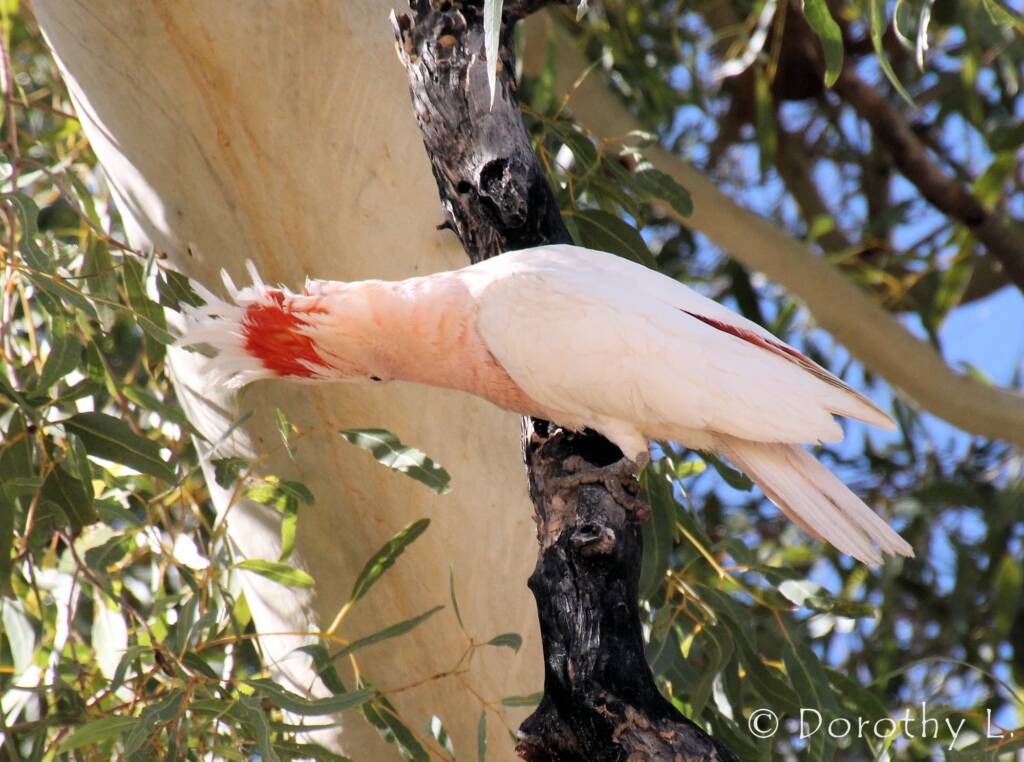
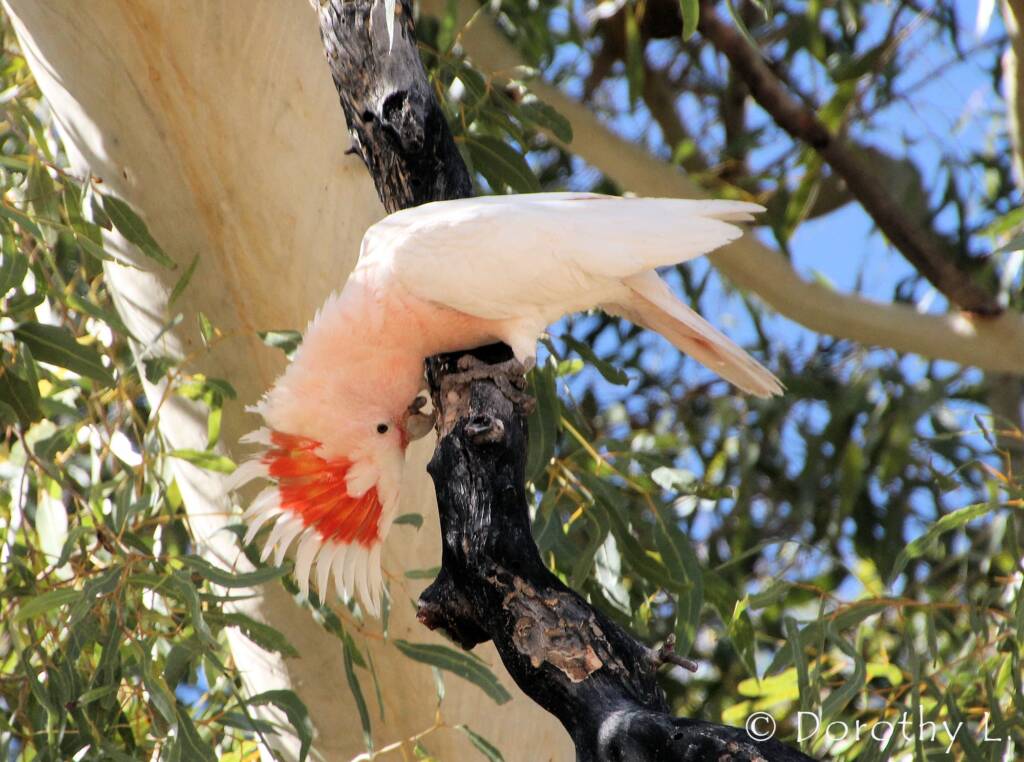
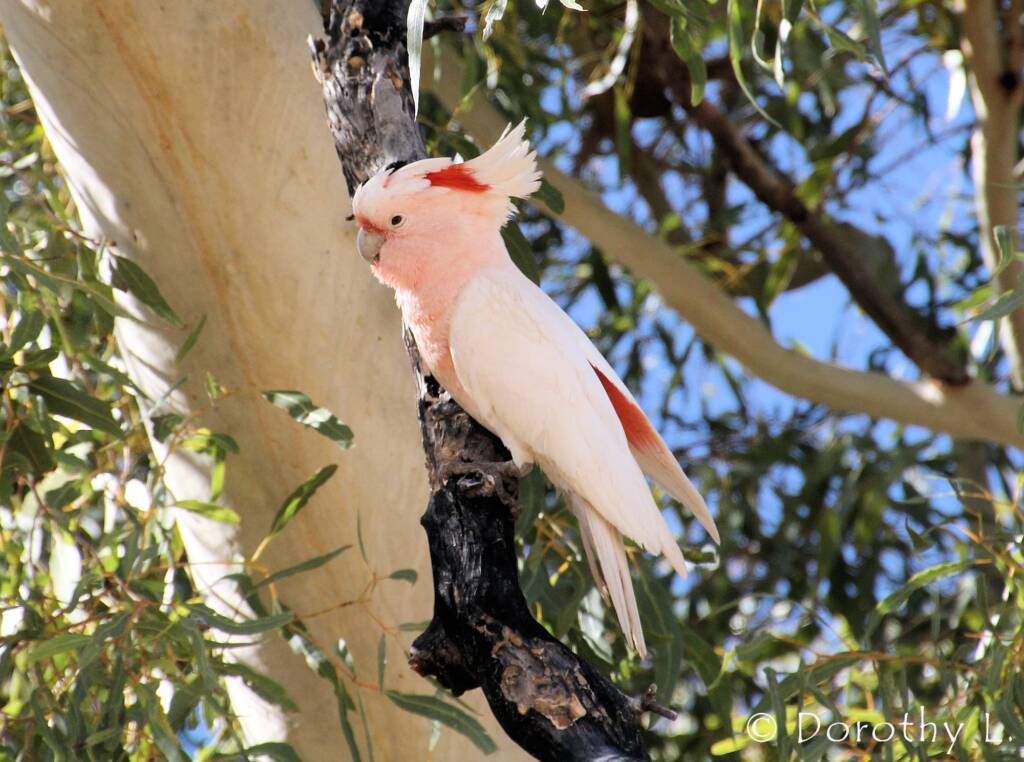
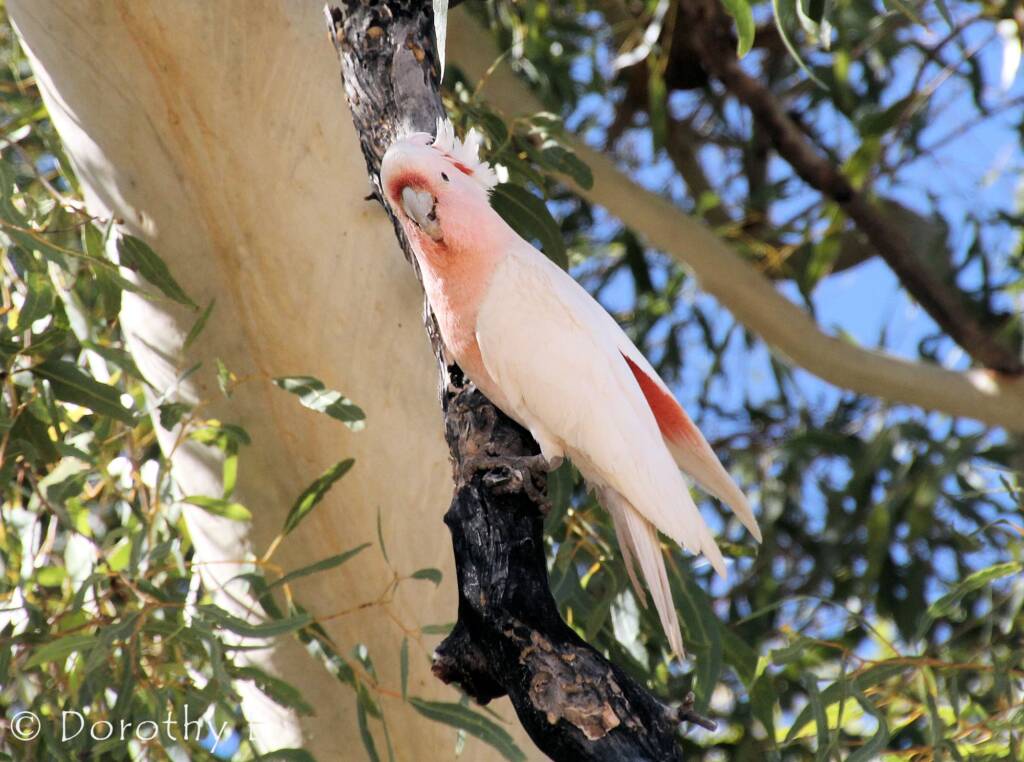
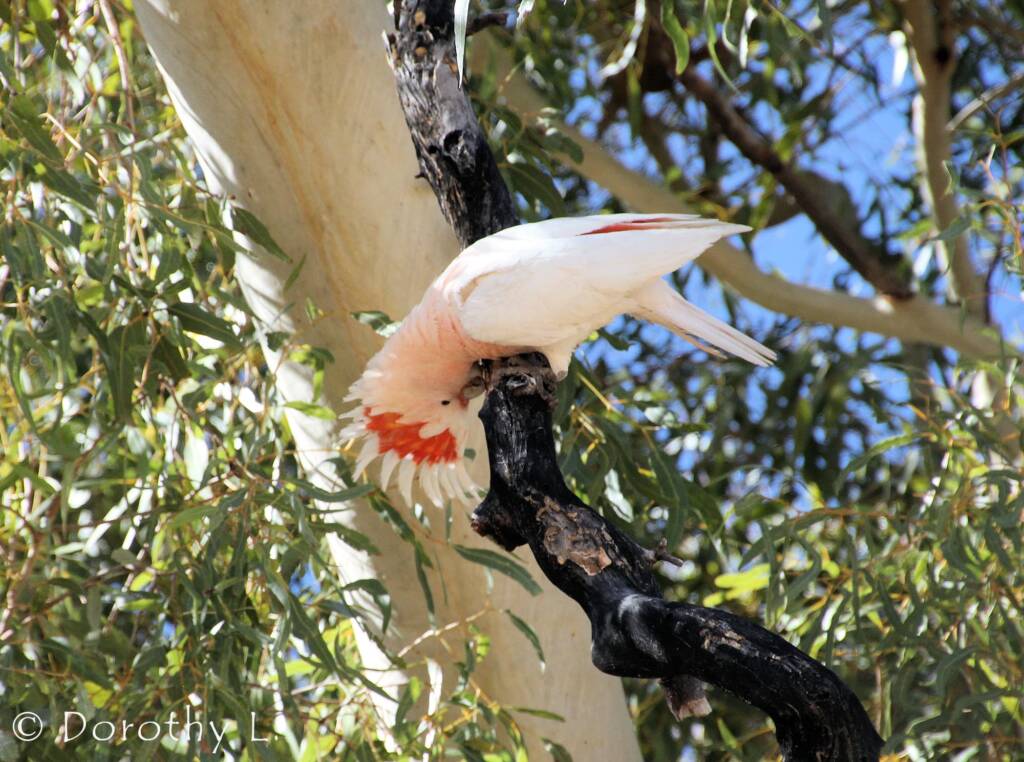
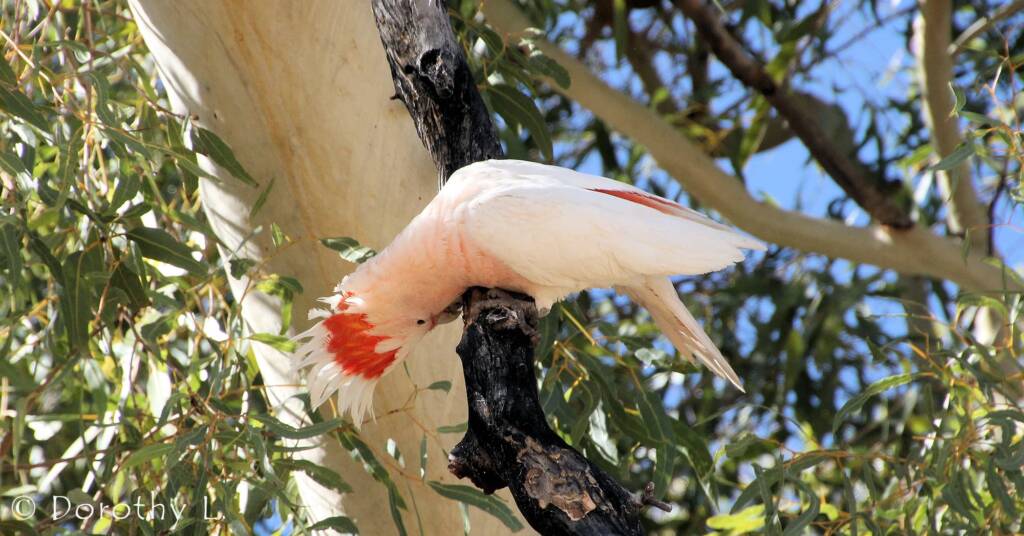

Common name
Pink Cockatoo, Major Mitchell’s Cockatoo, Mitchell Cockatoo, Leadbeater’s Cockatoo.
- Scientific classification
- Kingdom: Animalia
- Phylum: Chordata
- Class: Aves
- Order: Psittaciformes
- Family: Cacatuidae
- Genus: Lophochroa
- Species: L. leadbeateri
- Binomial name: Lophochroa leadbeateri
- Subspecies:
- L. leadbeateri
- L. mollis
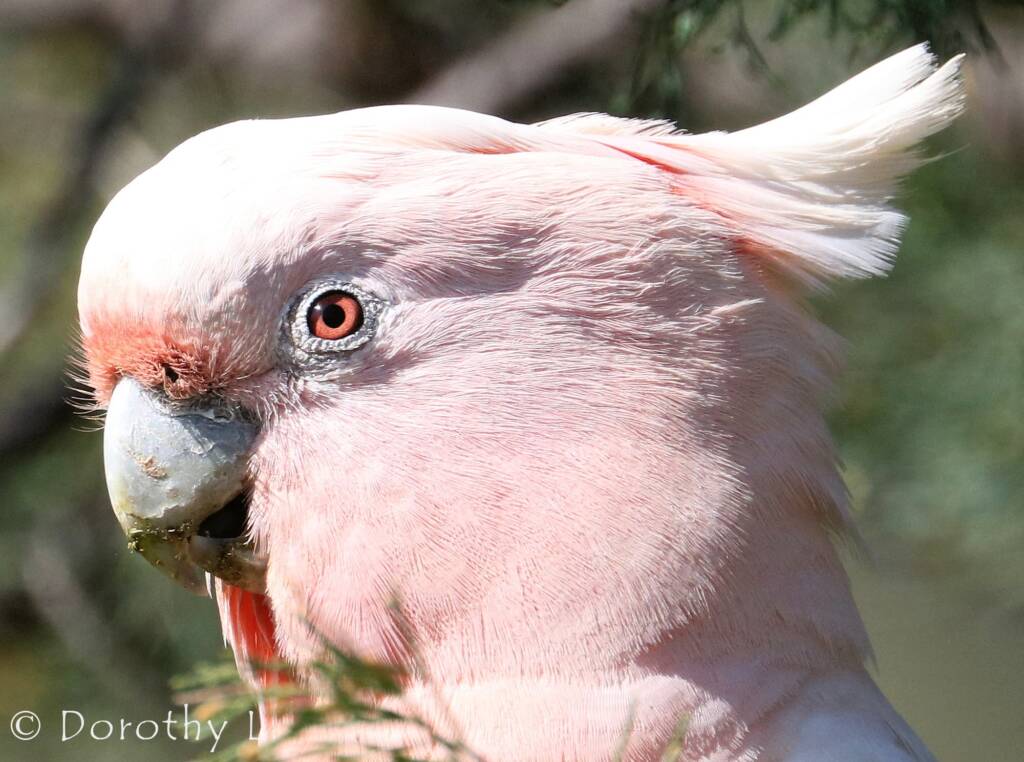
More images of the Pink Cockatoo can be found under our section:
Newhaven Wildlife Sanctuary > Fauna > Pink Cockatoo (Lophochroa leadbeateri)
Footnote & References
- Major Mitchell’s Cockatoo, BirdLife Australia, https://www.birdlife.org.au/bird-profile/major-mitchells-cockatoo
- Major Mitchell’s Cockatoo, eBird, https://ebird.org/species/pincoc1
- Major Mitchell’s Cockatoo – profile, NSW Government, Office of Environment & Heritage, https://www.environment.nsw.gov.au/threatenedspeciesapp/profile.aspx?id=10116
- New insights into the pink cockatoo, an outback Australian icon, Australian Museum, https://australian.museum/blog/amri-news/new-insights-into-the-pink-cockatoo-an-outback-australian-icon/
Major Mitchell’s CockatooPink Cockatoo – water Pink Cockatoo – crest
ParrotsAustralian Ringnecks Bluebonnet Bourke’s Parrot Budgerigar Cockatiel Galah Major Mitchell’s Cockatoo Mallee Ringneck Mulga Parrot Port Lincoln Ringneck Purple-crowned Lorikeet Rainbow Lorikeet Red-collared Lorikeet Red-tailed Black Cockatoo Sulphur-crested Cockatoo Yellow-tailed Black Cockatoo
BirdsApostlebird Australasian Darter Australasian Figbird Australasian Gannet Australasian Grebe Australasian Pipit Australasian Robins Australasian Shoveler (Spatula rhynchotis) Australasian Wrens Australian Babblers Australian Bustard Australian Chats Australian Magpie Australian Pelican Australian Pratincole (Stiltia isabella) Australian White Ibis Bassian Thrush Black-faced Cormorant Black-faced Woodswallow Black Swan Bowerbirds Brolga Brown Songlark Channel-billed Cuckoo Cinnamon Quail-thrush Cormorants Cuckooshrikes and Allies Dotterels Lapwings Plovers Doves & Pigeons Emu Fairy Martin Finches Grey Fantail Grey Teal Honeyeaters Kingfishers Little Friarbird Little Grassbird Magpie-lark Masked Woodswallow Noisy Pitta Olive Whistler Paradise Riflebird Pardalotes Parrots Pheasant Coucal Pied Butcherbird Rainbow Bee-eater Raptors Rufous Fantail Redthroat Rufous Bristlebird Silver-crowned Friarbird Torresian Crow Waders Welcome Swallow (Hirundo neoxena) Whiskered Tern (Chlidonias hybrida) White-browed Woodswallow White Capped Noddy White-faced Heron White-necked Heron Willie Wagtail Yellow-throated Scrubwren
